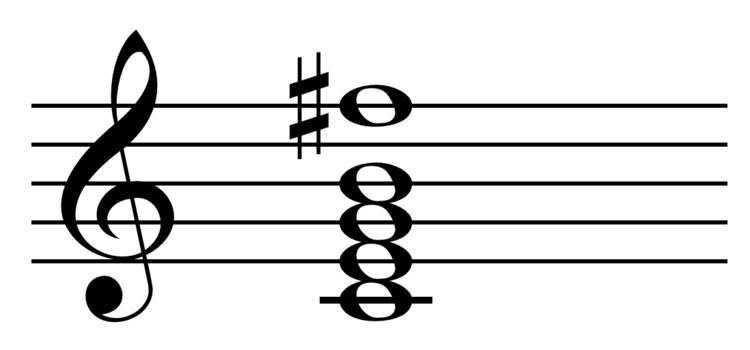 | ||
In jazz music, the lydian chord is the major 7♯11 chord, or ♯11 chord, the chord built on the first degree of the lydian mode, the sharp eleventh being a compound augmented fourth. It is described as "beautiful" and "modern sounding." The 7#11 chord generally resolves down by half step while the enharmonically equivalent 7(♭5) generally resolves up a fourth to the tonic being a dominant chord (♯11=♯4=♭5, see octave equivalency).
Major 7(♯11) may also refer to the Lydian augmented chord, an augmented seventh chord with augmented fourth appearing in the Lydian augmented scale Play .
In a chord chart the notation, "Lydian" indicates a major family chord with an added augmented eleventh, including maj7♯11, add9(♯11), and 6(♯11).
Harmonic function
Lydian chords may function as subdominants or substitutes for the tonic in major keys.
Lydian (CΔ♯11):
r 3 5 7 (9) ♯11 (6))
The dominant 7th ♯11 or Lydian dominant (C7♯11) comprises the notes:
r 3 (5) ♭7 (9) ♯11 (13)
Basing this chord on the pitch C results in the pitches:
C E G B♭ D F♯ A
The same chord type may also be voiced:
C E B♭ F♯ A D F♯
This voicing omits the perfect fifth (G) and raises the major ninth (D) by an octave. The augmented eleventh (F♯) is also played twice in two different registers. This is known as "doubling".
